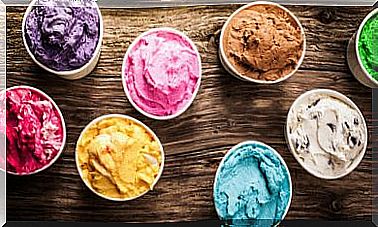20 Diseases Preventable By Breastfeeding

At this point, no one doubts that breast milk is the best food a mother can offer her child. The benefits are many, for both mother and baby. But did you know that there are many diseases that can be prevented with breastfeeding?
Without judging the decision to breastfeed or not, since each woman must choose freely and without guilt, the truth is that all scientific studies corroborate the positive consequences of this practice.
The World Health Organization (WHO) states that a child should be exclusively breastfed for the first 6 months of life. This period should be extended, if possible, up to 2 years of age, already in combination with other foods.
What is the composition of breast milk?
You may be surprised to learn that breast milk is a living fluid, capable of adapting to your baby’s nutritional and immune needs as he or she grows.
During the first 3 or 4 days after giving birth, the mother produces colostrum, a thick yellowish liquid that is low in volume but rich in nutrients. Then, between 15 days and the first month, what is known as mature milk is produced.
As surprising as it may seem, the totality of the components of breast milk is not yet known, as they change not only depending on each woman, but also on the same woman depending on the breast, feedings and the different stages of breastfeeding.
However, it is possible to identify the following characteristics of breast milk:
- It is made up of the carbohydrates, proteins and fats your baby needs.
- Provides digestive proteins, minerals (iron, calcium, zinc, sodium), vitamins (E, A, D, K) and hormones that babies require.
- It has antibodies that help keep the baby from getting sick. For example, it contains immunoglobulins, which protect the child’s mucous membranes; lymphocytes and macrophages, which act as a barrier against the environment; lactoferrin, which in addition to protecting from germs and bacteria, also contributes to iron absorption.
With all this, it’s no surprise that there are many diseases that can be prevented by breastfeeding. Now, what diseases are we referring more specifically to?

Some of the diseases that can be prevented with breastfeeding
During breastfeeding, the components that the baby receives help to fight some health problems. These are the main ones:
- Colostrum protects the newborn from a hemorrhagic disease, thanks to antioxidants and quinones.
- Immunoglobulins cover the digestive tract, which is still immature, and prevent the adherence of viruses, bacteria and parasites such as, for example, Escherichia coli , rotavirus, salmonella, pneumococci, staphylococci, among others.
- It reduces the risk of respiratory infections, such as bronchitis or pneumonia, as it helps the organs involved in this function to mature.
- Promotes the reduction of sudden infant death.
- Prevents allergic diseases.
- It is a barrier against skin problems.
- Decreases the risk of getting conjunctivitis.
- Prevents ear infections.
- It is effective against diarrhea or constipation.
- Improves neuronal connections and brain development.
- Reduces risk of anemia.
- Improves visual ability.
In addition to everything mentioned above, it is interesting to note that its function goes beyond protecting the baby in the first years of life. It also has the ability to defend you against illnesses in later life, such as asthma, diabetes, arteriosclerosis, heart attacks, etc.
Benefits for the mother
In addition to the diseases that can be prevented by breastfeeding, this form of feeding also has many positive points for the mother. At this stage, the bond that is generated between mother and baby goes far beyond what we imagine. It’s a unique and truly inexplicable connection.
On the other hand, oxytocin secretion increases when breastfeeding, as does physical contact. This has a positive effect on the mother, as the risk of postpartum depression is thus reduced.
Due to the increase in this hormone, your confidence level also increases, cortisol levels decrease – the stress hormone, thus decreasing anxiety – the sensation of pain is reduced and milk production is stimulated.
Another benefit is that, while a woman is breastfeeding, oxytocin activates all the hormones necessary for her own digestion. The functions of the stomach and intestine improve in such a way that they generate a better energy use from all the foods that the mother eats.
Also, after delivery, sucking the breast causes the uterus to contract and return to its natural size more quickly. Breastfeeding also reduces the risk of breast, ovarian or cervical cancer. Finally, an extra point in favor of breastfeeding is that it helps the mother get back in shape more quickly.

beyond health
It is clear that there are many diseases that can be prevented by breastfeeding and that the benefits for both mother and baby are enormous. However, its benefits go beyond health. For example, we can highlight other aspects, such as the constant availability of food for the baby.
Likewise, we know that milk is always ready and at the right temperature. You also don’t need any equipment to transport it and, as if all that wasn’t enough, it’s 100% hygienic and safe for the baby. Without a doubt, a food that cannot be wasted at all.









